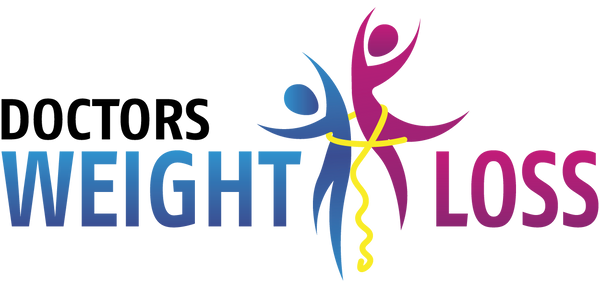Now that summer is right around the corner, you are in need of weight loss and fast. No need to look to miracle pills, waist trainers, or over the top exercise routines. By simply cutting a few things out of your diet, you may be able to shed the weight off in no time. A simple, yet widely known complicated answer is the ketogenic diet.
What is the Ketogenic Diet?
The Ketogenic Diet is a popular weight loss diet that consists of eating high-fat, adequate protein, low carb foods. Now as crazy as it sounds, this diet is pro-fat but only the "good fats". The Ketogenic diet, also known as Keto, limited the number of carbs you eat very strictly. While on Keto you cannot eat pasta, rice, grains, potatoes, and fruits. Even if they are "brown" healthy foods. Brown rice and whole wheat bread are considered cheating.
But why is that cheating?
There's a method to the madness. The point of limiting your carb intake is to allow your body to focus on burning other macronutrients as energy. According to Perfect Keto, after the body ingests a large number of carbs, it is then turned into glucose as an energy source. During Keto, because there are little to no carbs in your body it looks to convert another macronutrient as an energy source. "In the absence of carbs, the liver takes fatty acids in the body and converts them to ketone bodies, also known as ketones, as an energy source."
In doing so your body is no longer burning sugar but is burning fat as an energy source. If the liver is burning the fatty acids in your food, it is also burning the stored fat in your body as well.
How else is it affecting my body?
Besides the quick weight loss, the body goes through a number of changes in order to get used to a fat burning mentality. For one, you will feel a plethora of symptoms once you achieve ketosis. According to Healthline, signs of ketosis include bad breath, increased ketones in the blood, increased ketones in breath or urine, appetite suppression, increased focus and energy, short-term fatigue, short-term decrease in performance, digestive issues and insomnia.
In the beginning stage of the keto diet, often people report symptoms of "Keto Flu". Keto Flu lasts a week or so after starting the keto diet. Symptoms include sugar cravings, dizziness, brain fog, irritability, lack of concentration, stomach pains, nausea, cramping, confusion, muscle soreness and insomnia.
There are also some dangers of ketosis, it is, in fact, a short-term diet that may not be for everyone.
No, I don't mean the claim that ketosis can cause kidney damage. It has been reported ketosis does cause stress in the kidneys and may even cause the development of kidney stones. But there are no official reports linking ketosis to kidney damage. The main concern of ketosis is aimed towards the diabetic community.
If you believe ketosis can benefit you but are diagnosed with a form of diabetes, speak with your doctor before making any dietary changes. Unmonitored ketone and insulin levels can lead to a dangerous, life-threatening complication called ketoacidosis. Ketoacidosis occurs when the body develops too many ketones and not enough insulin. Symptoms of ketoacidosis include:
Thirst or Dehydration
Frequent Urination
Nausea or Vomiting
Abdominal Pain
Weakness, Fatigue
Fruity-scented breath
Confusion
Blurred Vision
If you have a majority of these symptoms seek medical attention for proper diagnosis.
Where did Keto come from?
Well, it is not necessarily a passing fad. The Ketogenic diet was actually used in the past to treat epilepsy in children. According to an article published on News Medical, the first official study on the diet was conducted in France during the early 1910's. The study found a low calorie, vegetarian diet with fasting improved epilepsy patients' mental abilities.
"It was in 1921 that endocrinologist Rollin Woodyatt noted that three water-soluble compounds, acetone, B-hydroxybutyrate and acetoacetate (together called ketone bodies) were produced by the liver as a result of starvation or if they followed a diet rich in fat and low carbohydrates. Russel Wilder from the Mayo Clinic called this the 'ketogenic diet' and used it as a treatment for epilepsy..."
What can I eat?
As mentioned before you absolutely will have to turn down the rice, bread, and pasta. This can break your ketosis because of the number of carbs and sugars. Below are examples of some foods that are acceptable to eat while under ketosis:
Meats:
Fish, Lamb, Poultry, Beef, Eggs
Leafy Greens:
Arugula, Lettuce, Cabbage, Parsley, Spinach, Kale
Above Ground Vegetables:
Cauliflower, Broccoli, Asparagus, Cucumber, Green Beans
High-Fat Diary:
Milk (or Unsweetened Alternatives), Heavy Creams, Greek Yogurt, Cheese
Nuts & Seeds:
Chia, Flax, Hemp, Sunflower, Sesame, Almonds, Coconut, Pistachios
Avocado & Berries:
Tomatoes, Lemon, Lime, Strawberries, Avocado, Blackberry
Fats:
Almond Butter, Oil, Butter, Full Fat Mayonnaise
There are many other foods that are high in fat you can add to your shopping list. But if you have a busy life and cannot find the time to find these foods and prepare them; we have a simple solution. Here at Doctors Best Weight Loss, we carry products that can keep your Keto needs. We have low sugar, low carb items and we even created Keto Meal Plans! Browse through our products and find out which tasty keto-friendly product is right for you.






